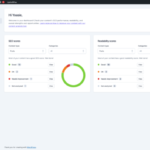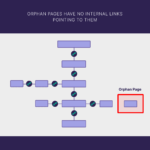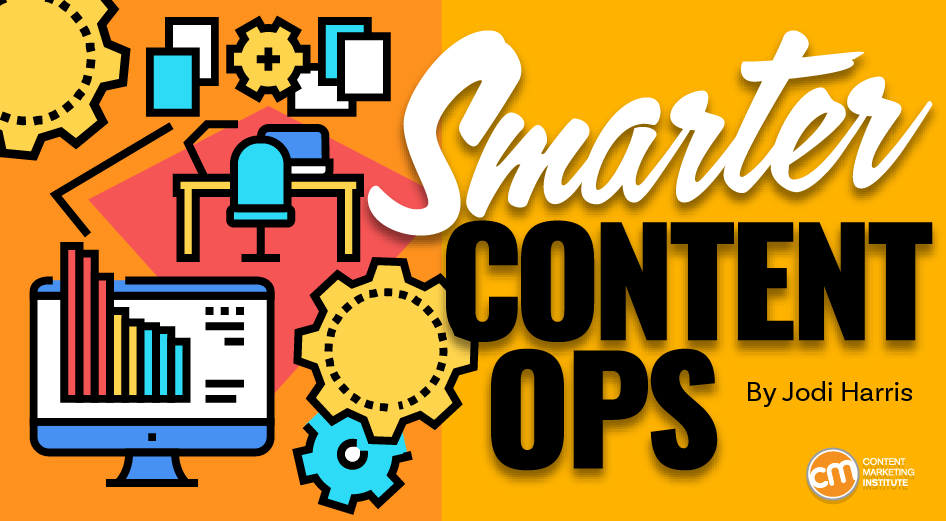
You’ve heard the expression, “Work smarter, not harder.”
Content marketing teams would do well to adopt that philosophy. Hard work alone can’t solve the struggle to meet the demands for more (and better) content. Smarter work, though, can remove the friction, confusion, and production inefficiencies that can hinder their success.
Smarter work requires clear operational workflows and well-defined processes. If your team lacks these foundational elements, important tasks fall through the cracks, and no one knows the next steps or who’s responsible for seeing them through. Eventually, chaos reigns, content quality suffers, and the team wastes time fixing production problems while your competitors solve your audience’s challenges.
With this streamlined, five-step process, you can map workflows for each content format and variation your team produces regularly. Then, you can build executable processes that make production more manageable. The templates and examples can guide you through each step.
Step 1: Audit your content formats
First, you need a high-level view of all the content deliverables and distribution for each format.
Create a template with these columns — content format, primary distribution platform, additional distribution platforms, and special circumstances and variation.
- Content format: Do you create articles? E-books? Live presentations? Webinars? Visual content? Create a row for each format your team regularly produces.
- Primary delivery platform: Where is each format published or shared first? Ideally, it is an owned-media platform, like your blog or via email. However, if it’s an external platform like social media, note the destination.
- Additional distribution platforms. Do you use this content format on other channels? List them. This step helps surface overlooked tasks in the process, such as uploading assets to your brand’s social pages through an admin account or resizing images to platform specifications. It also accounts for post-publishing steps to provide a consistent multiplatform experience.
- Special circumstances and variations. Do you gate some e-books as lead-gen magnets while other e-books remain ungated? Are videos added to your newsletters only when you’re promoting an event or special offer? Note any variations that require extra steps or a distinct production process.
TIP: If a content format is used significantly in multiple ways, list those uses in separate rows. For example, videos might have two rows, Video — YouTube and Video — Instagram Stories.
At this point, focus only on the high-level tasks in your operations workflow. Finer details like design needs, who creates the content, and who needs to approve it will come later (step three).
Here’s an example of how an audit might look:
| Content Format | Primary Distribution Platform | Additional Distribution Platforms | Special Circumstances/Variations |
| Editorial article | Website (Blog) | · Newsletter · LinkedIn profile page/group · Social media |
· Sponsored posts · Crowdsourced posts · Example collections · Republished posts · Contributor submissions |
| Newsletter | None | None | |
| E-book | Website (Resources page) | · Email campaigns · Editorial article · Sponsored landing page |
· Gated for lead gen · Sponsored e-books |
| Video (livestream) | · Facebook · TikTok LIVE |
· Co-created with influencer · Expert interviews |
|
| Video (scripted) | YouTube | · Website blog · Event microsite · Website video page |
· Sponsored webinars |
| Social media post | · Facebook |
· Paid promotions · Co-created with influencers |
|
| Live presentation | In-person event | · Virtual events platform · LinkedIn Live |
· Video snippets on social media · Distribution partner site |
Step 2: List all tasks required for each format
Next, detail all the editorial, collaborative, and technical production tasks to produce each content format for its primary platform.
You may want to start with the most frequently produced or the most critical to your content goals. Alternatively, begin with the most complex asset, which involves multiple teams or many steps to produce and distribute. You’ll see why in a minute.
Don’t worry about putting the tasks in order. Just list them as they come to mind. For example, an editorial article for your website’s blog might include this task list:
- Determine topic.
- Schedule publication in the editorial calendar.
- Edit submitted copy.
- Load copy and images to the content management system.
- Format content for layout.
- Send edited copy to author and stakeholders for revisions/approval.
- Request sales/marketing feedback on the topic.
- Set metadata details for SEO.
- Send links/assets to the contact person for the daily email newsletter.
- Design and develop visual images.
- Gather author bio info/assets.
- Brainstorm specific story angles.
- Identify and interview subject matter expert(s).
- Collect metrics/generate performance reports.
- Assign author to write copy.
- Proof and approve the final layout.
- Share performance data with stakeholders.
- Publish content to its primary platform.
- Share links/assets with content partners for their usage.
Some of these tasks may have multiple sub-steps. For example, formatting the article could involve importing and resizing images, adding hyperlinks, setting category tags, etc. But for this exercise, stick to broad task categories.
Step 3: Organize tasks by production stage
Next, for each format, group the tasks in sequential order into pre-production, production, and post-production stages, as shown in the template below.
Feel free to add clarifying details to your task descriptions. They could help team members distinguish commonly confused actions, like editing for substance vs. final proofreading.
| Stage of Content Format (editorial article) |
Required Tasks |
| Pre-production stage | Determine the topic. |
| Brainstorm angle. | |
| Identify sources/subject matter experts. | |
| Request sales/marketing feedback on the topic and approach. | |
| Assign a writer. | |
| Facilitate governance requirements. | |
| Create/gather author bio info/assets. | |
| Production stage | Receive author submission. |
| Edit/revise copy for style and substance. | |
| Design/develop visuals. | |
| Send a final copy to the author and stakeholders for revisions/approval. | |
| Load/format copy and visuals for layout. | |
| Set metadata details for SEO. | |
| Proof and approve the final layout. | |
| Post-production stage | Schedule publication in the editorial calendar. |
| Publish content (including metadata) to its primary platform. | |
| Send content to [contact] for email alert/newsletter inclusion. | |
| Share links/assets with content partners for additional promotion, repurposing, and distribution efforts per the content plan. | |
| Collect metrics data and generate reports. | |
| Share performance data with stakeholders to inform potential adjustments or future content plans. |
To help organize your tasks in logical order, also answer these questions:
- Which tasks must happen before others can start?
- Which tasks can happen concurrently?
- What tasks denote a stage is complete and the next can begin?
Your processes must account for standards and requirements set at the enterprise level or that contribute to other organizational functions. For example, you may need to set metadata details according to your enterprise SEO strategy or comply with organizational procedures, like securing signed contributor agreements.
If these steps didn’t make it onto your initial task list, add them. (In the example above, I added “facilitate governance requirements” that wasn’t on the original task list. If you’re unsure what these tasks involve — or how to fulfill them — find out. It will only make your work harder if you need to plug in or reorder steps after you’ve mapped the operational workflow.
Step 4: Assign roles and map how work will flow
From here, you add a column to set roles and responsibilities for each task. With this information, you can create a map showing how production efforts flow from one role to the next.
The first part is relatively easy, especially if you have a small, centralized content marketing team and clearly outlined roles. For collaborative tasks, include all people (or the departments they represent) who must act before that task is complete. In this example, I slotted in some pre-production roles as a guide:
| Stage of Content Format (editorial article) | Task To Do | Roles |
| Pre-production stage | Determine the topic. | · Team leader |
| Brainstorm angle. | · Team leader · Managing editor |
|
| Identify sources/subject matter experts. | · Managing editor · Story editor · Staff writers |
|
| Request sales/marketing feedback on the topic and approach. | · Managing editor | |
| Assign a writer. | · Managing editor | |
| Facilitate governance requirements. | · Managing editor | |
| Create/gather author bio info/assets. | · Copy editor |
Determining roles can be more complicated for larger enterprises or those with shared content responsibilities across departments. However, once you slot your content marketing team members into their standard areas of responsibility, you can see where gaps exist. That can help identify the internal teams to approach for collaborative assistance.
Additionally, it helps pinpoint areas where you lack adequate capabilities or coverage so you can proactively fill them by outsourcing talent or incorporating generative AI tools. You may discover unnecessary redundancies that can be eliminated.
The chart now provides all the information needed to understand the editorial article format workflow. However, transforming it into a shareable graphic or map can help stakeholders visualize how they fit in the production continuum and what still needs to happen.
Step 5: Operationalize and iterate
You listed the tasks and mapped the order of operations for a content format. Now, implement it as a repeatable process. Create a mechanism to track and manage the tasks as they get done and ensure everyone has what they need to do their part.
You can use the detailed dashboards provided in project management tools like Asana or Jira to build a sophisticated system. Another option is to create customized trackers and checklists using cloud-based work tools like Airtable, Trello, or Notion. However, the most straightforward approach may be to copy the information from the templated chart into a shareable Google spreadsheet or Excel document.
Now, you can adapt the process for variations of the content format. Here’s how that works:
- Revisit the original table that notes exceptional circumstances and variations that require a different set of steps.
- Walk through the tasks on the chart (step two). Delete unnecessary tasks for the variation and identify any to be added. For example, with a sponsored blog post (a variation of a blog article), you may need to integrate the client’s logo and boilerplate copy or facilitate their copy review and approval process.
- Assign roles for newly added tasks.
With this model, you can repeat this process for each regularly used content format, so you have a comprehensive content operations tracker.
Build, revise, repeat, and achieve
Content marketing teams juggle many responsibilities. Why not make their jobs easier by working smarter? Map the operational workflows and build reliable processes that empower their performance.
If you decide to try this shortcut, I’d love to hear how it worked — or how you adapted it to work better for your team.
All tools mentioned in the article are identified by the author. If you have a tool to share, tag us on social media.
HANDPICKED RELATED CONTENT:
Cover image by Joseph Kalinowski/Content Marketing Institute




